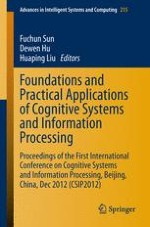2014 | OriginalPaper | Chapter
Predictive Coding with Context as a Model of Image Saliency Map
Authors : Duzhen Zhang, Chuancai Liu
Published in: Foundations and Practical Applications of Cognitive Systems and Information Processing
Publisher: Springer Berlin Heidelberg
Activate our intelligent search to find suitable subject content or patents.
Select sections of text to find matching patents with Artificial Intelligence. powered by
Select sections of text to find additional relevant content using AI-assisted search. powered by
